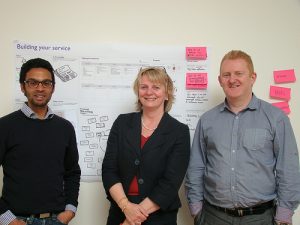MMM – Service Design Cues for The Arts

Mission Models Money is a passionate network of thinkers and doers whose vision is to transform the way the arts use their resources to support the creation and experience of great art.
Mission Models Money is a passionate network of thinkers and doers whose vision is to transform the way the arts use their resources to support the creation and experience of great art.
MMM chose Snook to design a new programme of work currently in co-design stage with a wide network of individuals and organisations across the UK’s not for profit arts and cultal sector.
The team had never thought about what their offering as a ‘service’, the word ‘service’ conjures up thoughts of transactional exchanges and for others it has much more positive connotations such as ‘being of service’ which leans towards the notion of the gift economy.
A big part of our role was to ensure clarity, as MMM needed a clear and jargon-free explanation of their service offering. We spent time understanding this new phase as a service, mapping programme outcomes and relation to stakeholders and really imagining what MMM’s new service might look like from a user perspective. The trio got colourful with cartoons and story telling and it really helped bring it to life!
You can see pictures of the tools we used and the outcomes generated here.
Read more about this piece of work on Mark Robinson’s blog
“So here’s just three areas for any arts organisation to ponder using a service design approach:
1. How do artists experience your organisation? What’s the conversation you have with them like? What makes them feel a genuinely equal part of the organisation or project? How do they meet with people? How are they represented in your communications and other ‘imagery’? What do they actually do with you? How do you maintain the relationship change when the production or exhibition is over, if at all?
2. If your work includes participation or learning or engagement – or indeed any other way of ‘people doing things not just watching’ – how does the individual experience that? What are the key moments and how do you want them to feel? Are you designing the interaction, the spaces, the materials, to get as close to that result as you can? What would you want if you were that member of the public? What language do you use, and whose is it – yours or theirs?
3. What service do you provide to the people you call funders, and how do they experience and understand that? How do you communicate to them – where and when, and with what? Think of it from their seat – what’s their ideal experience and how close to it are you currently? How could the relationship grow? What happens to the contact when they stop funding you?”
If you want to know more about this project, email lauren@wearesnook.com